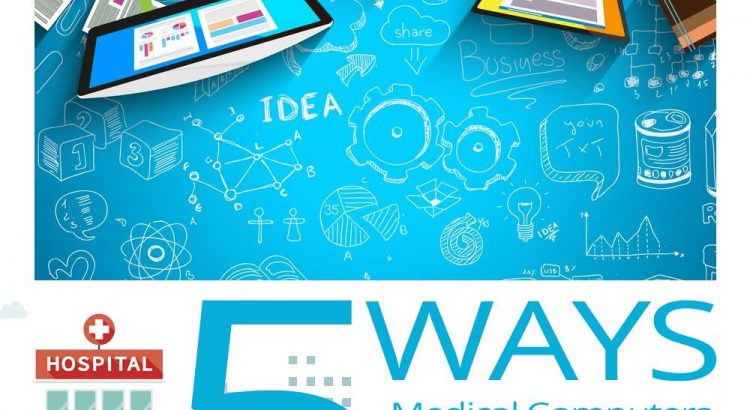5 Ways Medical Computers Excel over Consumer PCs
There’s a good reason why the healthcare field is one of the most heavily regulated industries with the most oversight. When it comes to patient care, painstaking efforts are necessary to protect everyone at a medical facility including staff and visitors. Everything including medical equipment needs to meet strict criteria in order to be certified for hospital use from the spread of contagion and harmful pathogens. The following list elaborates on just a few of the features that really set a true medical computer apart from your standard consumer PC.
-
Antimicrobial Coating
Antimicrobial protection on medical computer surfaces is achieved with additives that are baked right into the plastic of the enclosure. These additives have been proven to have long-lasting effectiveness in combating fungi, bacteria, molds and spreadable pathogens. Both the casing & screen of the Tangent’s medical computers have antimicrobial material which prevents germs from growing, lowering patient infection rates. Proper cleaning of the computer equipment helps prevent MRSA, CDIFF, and Hepatitis from growing and spreading. The antimicrobial coating also has the added benefit of minimizing odors, staining, and degradation of the surfaces where it is applied.
2. UL/IEC60601-1 Certification
Having a UL/IEC60601-1 Certification demonstrates that a medical computer has been rigorously tested and guaranteed to be protected from electrical frequency leakage, making it safe for use near patients and staff. The medical computer’s certification also indicates that it is shielded and will not interfere with other sensitive medical equipment in the vicinity.
3. Smart Card Readers, RFID, Barcode Scanners, Etc
Tangent’s medical computer line has a variety of options that provide many benefits to the clinical work space. An in-system smart card reader allows for secure login and user identification, as well as accept credit card payments. Bar code scanners are great for quickly scanning patient wristbands and medication for either checking in, checking out, or tracking inventory of hospital assets. RFID also provides a fast and easy way to track assets or locate people or equipment within a facility. Having accessories like these built into a medical computer saves on time and cuts down on wires and attachments that can be lost or stolen.
4. Hot Swap Batteries/Internal Batteries
Disaster recovery is a main staple of a medical facility’s preparedness package. When there’s a power outage, patient’s lives can be at risk. Hot swappable batteries in some of Tangent’s medical computers can provide up to 10.5 hours of runtime without any interruption. This can be a literal lifesaver during periods of severe power loss.
5. Fanless Operation
Longevity, reliability, and strong performance are requisite of any medical computer. An excellent advance for computer technology was the introduction of the fanless computer. With no moving fan parts, the system has fewer components that can wear out and fail. In addition to that, a fanless system will not collect dust and contaminants inside of it or blow it around in the air. People with sensitive systems or allergies certainly appreciate that.
